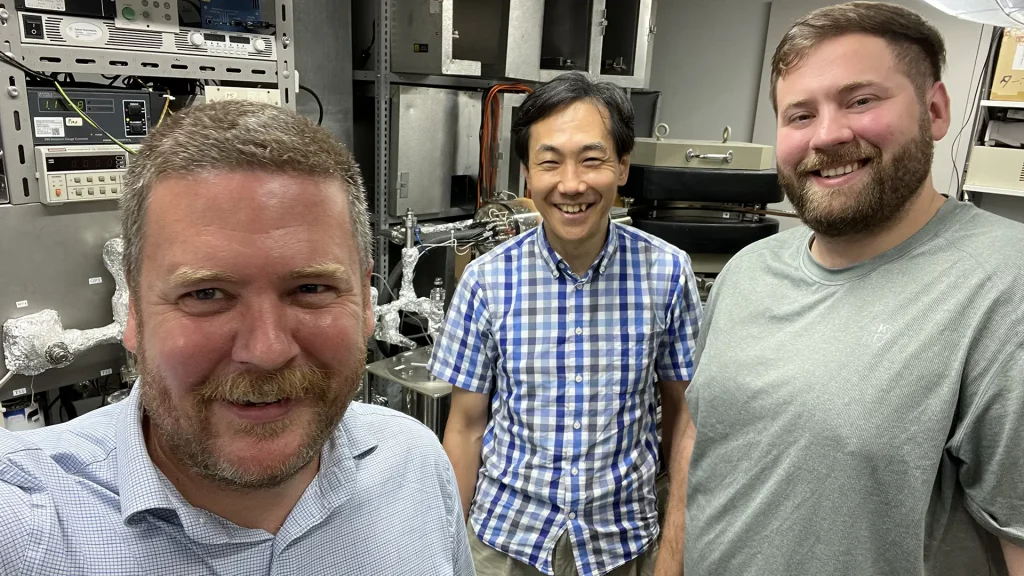Walvis Ridge Sample Yields New Analysis
Walvis Ridge Sample Yields New Analysis

Understanding the complex origins of the Walvis Ridge hotspot took Jesse Scholpp (PhD ’24) across three continents, and yet none of that was highlighted in the dissertation on lunar rocks he defended in December. Instead, the international collaboration (with team members from the US, Canada, Germany, England, and Japan) started as a side project.
In 2021, Scholpp joined his master’s advisor John Shervais and another of his former students, Katie Potter, in South Africa to study the origins of the Walvis Ridge. This geologic structure is unusual, appearing like a single hotspot (initiating about 130 million years ago) that split into three (about 70 million years ago) during the breakup of Gondwana and the expansion of the southern Atlantic, as South America and Africa split apart. How and why that might have happened are hotly contested.
The team spent two weeks in quarantine in South Africa before embarking, because the Omicron variant of the COVID-19 virus was just picking up speed. Despite the precaution, they had to turn around when one of their collaborators tested positive mid-voyage. Back at the ridge, they drilled for samples in about 4,000 meters of water and an additional 500 meters of rock, under the watchful eyes of a variety of seals, whales, and at least one seemingly lost penguin.

The samples first were taken to the University of Alberta, where they were blasted with high voltage to separate the minerals in the rock. Then, each grain of olivine needed to be separated from the other minerals by hand. After that, Scholpp and EEPS advisor Nick Dygert, the Lawrence and Dawn Taylor Associate Professor of Planetary Geosciences, took the olivine to the University of Tokyo and a one-of-a-kind mass spectrometer, designed and built by their collaborator, Professor Hirochika Sumino.
Most mass spectrometers require a different sample to assess each noble gas present in a rock, a process that requires significant time and a large number of specimens. Sumino’s mass spectrometer could analyze each gas from a single specimen, cycling one sample through a process that crushed the grains to fracture them, heated them to release the noble gases, sent that through a purification system to separate the gases, and then analyzed each gas in turn to get relative abundances and isotope ratios.
The results were surprising. Previous interpretations had suggested that all three plumes of the Walvis Ridge formed at the same time, diverging from the initial mantle plume that possibly initiated the breakup of Gondwana into a triplet of neighboring hot spots. The noble gases held in the sampled olivines told a different story.
In this new research, only the central track preserves a primordial helium-3 isotope anomaly consistent with mantle plume origins. The two side tracks appear more degassed, yielding noble gas isotopic signatures more similar to those seen in the mid-Atlantic Ridge. This suggests that these two were subplumes, whose chemical signatures shifted as they incorporated more material from the upper mantle.
This work reframes the history and formation of Walvis Ridge, and all this “side-project” took was travel across three continents and access to wholly unique equipment.